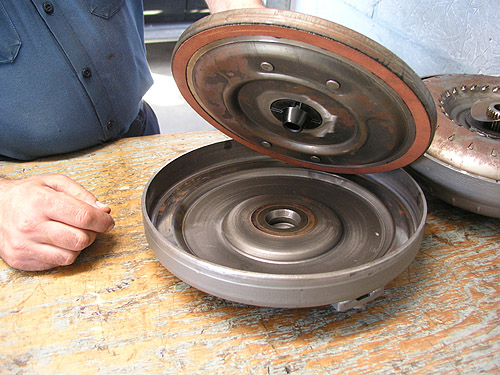"Lock up" torque converter
Although the torque converter clutch is not part of the engine, it can make the car feel like the engine has a problem. The torque converter clutch is also known as a lock up converter. The lockup clutch has many purposes and is part of the transmission. A regular converter in an automatic transmission is made to slip at idle so that the car doesn't move. As the accelerator is pressed the RPM's raise and the torque converter will start to lockup or engage. When the converter engages the car will move.
Even though the torque converter is engaged it never completely engages the way a manual transmission car clutch will. It will always slip a little, which is not very efficient. This is why a manual transmission car gets better gas mileage and has more power than an automatic transmission car. To increase power and mainly fuel mileage, a TCC is added to an automatic transmission.
The torque converter clutch is an electronic clutch that will engage the engine and drivetrain 100 percent. The TCC is made to engage usually only in the top gear when the car is cruising, not accelerating. The lock up converter will disengage when the accelerator is pressed hard enough. Over time the clutch will wear out especially if the vehicle ever towed anything and was operated in overdrive (top gear). This will wear the clutch out prematurely. If you have a tachometer you will see the RPM's drop a few hundred when it engages.
